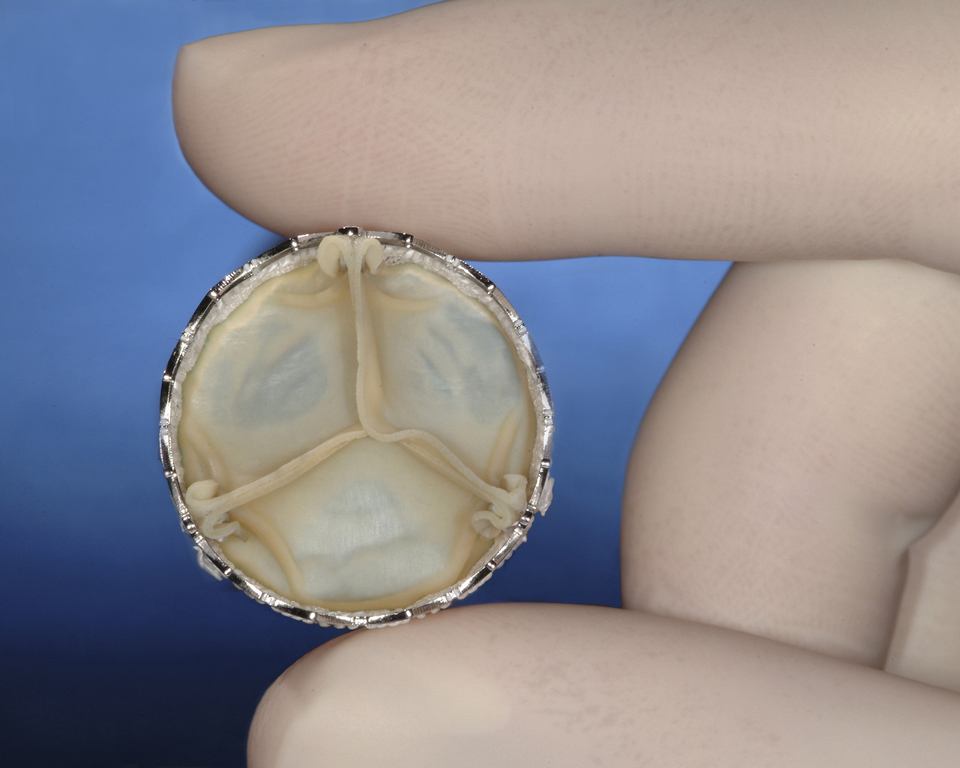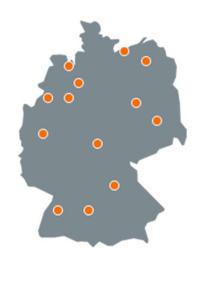Transcatheter aortic valve implantation, or TAVI, is a minimally invasive procedure used to replace a too-tight heart valve. It is a good alternative to open heart surgery for patients who have aortic valve stenosis, a narrowing or calcification of the aortic valve. By replacing the faulty valve with an artificial one, this procedure allows oxygen-rich blood to flow away from the heart and deliver oxygen to the rest of the body.
German heart specialists are pioneers in the field of minimally invasive heart procedures. By pushing for research in the direction of minimally invasive procedures, they have made heart surgery safer and more accessible for patients. German heart centers perform a high number of catheter-assisted heart procedures every year and have accumulated extensive experience even in these relatively new operative techniques.
Aortic valve stenosis: blocking the flow of blood from the heart
Heart valves are important to keep blood flowing in the right direction as it enters and leaves the heart. Valve-related problems disrupt blood flow and prevent oxygenated blood from being delivered efficiently to the body’s organs to keep them functioning. A heart valve may be too loose, resulting in a backflow of blood called regurgitation, or too tight, in which blood cannot easily pass through. A too-tight valve is known as stenosis, and it can occur in any of the heart’s four major valves.
The TAVI procedure is a treatment for aortic valve stenosis, or a too-tight aortic valve.
Accessing the heart through the circulatory system
TAVI, also known as TAVR, is a minimally-invasive procedure performed via catheter, meaning the heart is accessed through a long, narrow tube inserted through another part of the body. This means doctors can replace the valve without opening the chest, making the surgery far less invasive than traditional open heart surgery. A TAVI procedure may be a good treatment option or patients who are not candidates for open heart surgery.
In this procedure, a doctor threads a catheter into the heart and through the faulty valve, then uses a medical balloon to push open the valve’s flaps, or leaflets. Then, an artificial or animal valve is threaded into place in the middle of the old valve, also using the catheter. The new valve is held in place by the leaflets of the old valve, and blood can begin immediately flowing through the new valve. Once the doctor is sure the new valve is positioned correctly and held firmly in place, they release the valve and remove the catheter. After a short hospital stay, the patient can return home.
Advantages of TAVI in Germany
The biggest advantage of minimally invasive heart procedures such as TAVI is that they can also be performed on heart disease patients who, for a number of reasons, should not undergo open heart surgery. Elderly patients, people with co-morbidities and people who have had previous heart surgeries are all examples of people who would be recommended against traditional heart surgery but who may benefit from a minimally invasive procedure. Even patients who are candidates for open heart surgery may benefit from the smaller incisions, shorter recovery time and lower risk of complications of the TAVI.
European medical professionals pioneered transcatheter heart procedures in the early 2000s, and the technique was introduced in Europe in 2007. The procedures were approved for use in the U.S. five years later, meaning European doctors have been performing such procedures for longer, have more experience, and the procedure’s availability is more widespread.
Heart procedures in Germany are typically performed by a highly skilled, interdisciplinary team of different heart specialists in hybrid operating rooms to provide patients with safe and comprehensive medical care. To learn more about heart surgery in Germany, contact us and we can provide more information.



